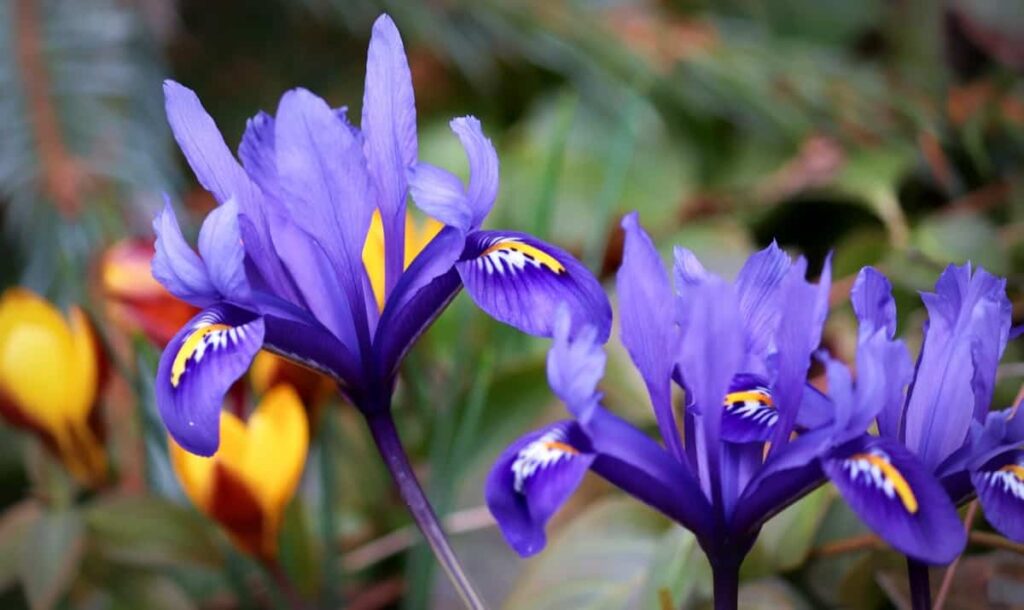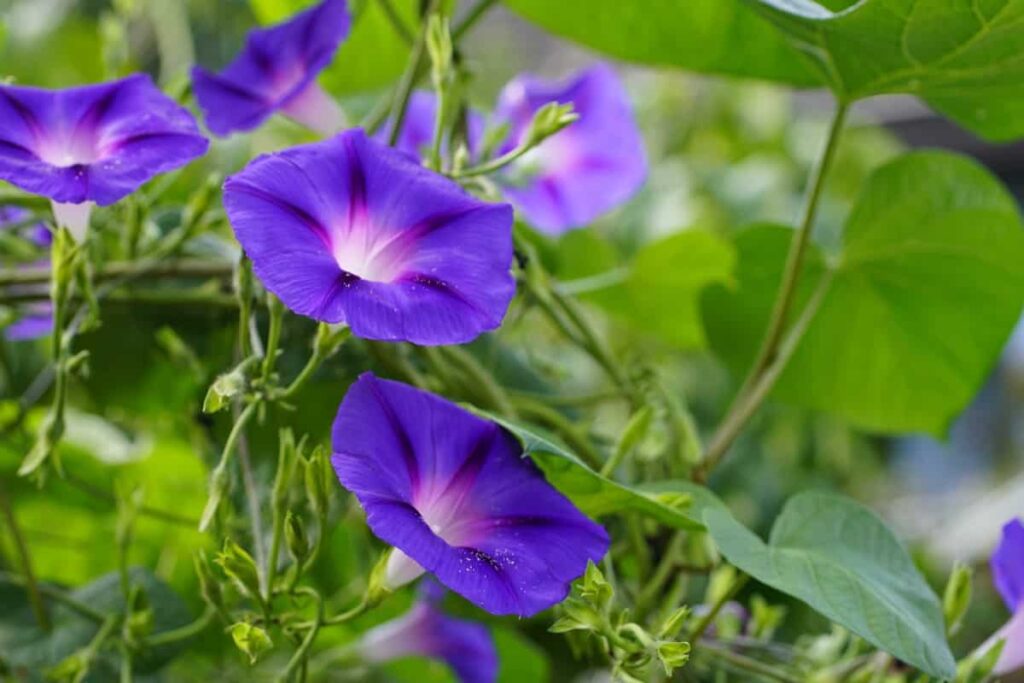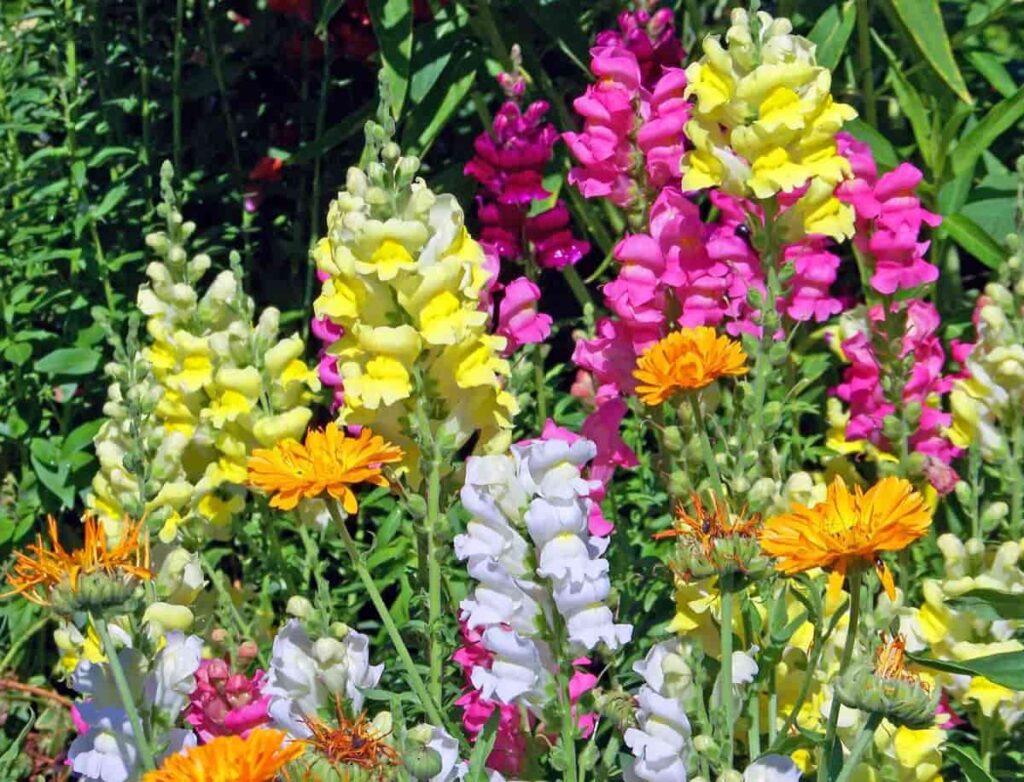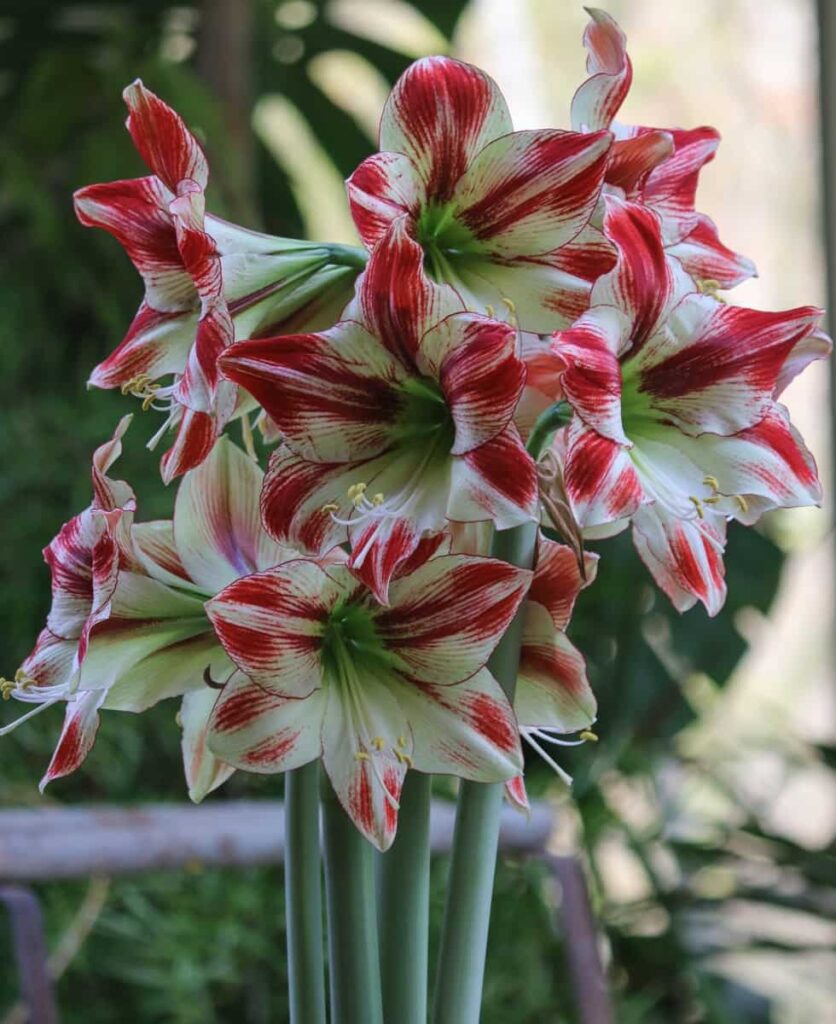From florists to gardeners, everyone loves a display of colorful blooms. There are many different types of flowers, each with its special features. Some flowers grow in clusters, while others grow alone. Many flowers have brightly colored petals, and others have delicate leaves. Some flowers are pollinated by bees, while others are pollinated by wind. Some plants only produce pollen in the evening or early morning, while others produce pollen throughout the day.
There is a wide variety of flower colors, shapes, and sizes, so you can get a flower that matches your interests and preferences. There are many benefits to choosing all-year flowering plants. These plants typically require less care than summer or fall-blooming plants and are often easier to grow in containers. Finally, all-year flowering plants tend to be more drought tolerant than other flowers, meaning they can handle harsher weather conditions better.
Top 10 all year flowering plants
Amaryllis
- Amaryllis is a great option if you’re looking for an all-year flowering plant. This bulbous plant typically grows 1 to 2 feet tall and has fragrant white flowers in late winter. You can grow Amaryllis indoors or out, and the bulbs will store energy over the winter months to bloom again next year. Growing and caring for Amaryllis plants is a rewarding experience. Amaryllis is easy to grow and can be grown in many different soil types and climates.
- The flowers are usually large and showy, with six petals ranging in color from white to shades of pink, purple, and lavender. Amaryllis bulbs should be planted in well-drained soil in a sunny location; they like temperatures between 12°C to 30°C. In the springtime, Amaryllis will send up long stalks topped by dozens of large, trumpet-shaped flowers. After the flowers have bloomed, you can start digging up the bulbs and storing them in a cool place until you’re ready to replant them; they’ll produce new bulbs every year.
In case you missed it: How to Create a Beautiful Flower Garden in the Balcony
Daffodils
- Daffodils are perhaps the most popular flowers for all-year flowering. They are available in various colors and can be planted individually or in groups. Daffodils are a wonderfully versatile plant. They come in various colors and sizes, making them perfect for all occasions. They’re also relatively easy to grow, making them an ideal choice for those new to gardening. Daffodils are a very popular spring flower. They can be grown in various soils and climates but do best in full sun. They are easy to grow from bulbs, but they will also grow from seed. Plant the bulbs in early spring and water them regularly. Daffodils need plenty of water during the growing season but don’t allow them to get soaked.
- Daffodils are a type of bulb that can be grown in your garden. They need warmth and sun to grow and will quickly become established once started. Plant the bulbs in well-drained soil in a sunny spot. Water the bulbs when they droop and then regularly until they flower. Fertilize the plants with an organic fertilizer around midsummer when their blooms start to fade. Prune off decaying flower stalks and leaves in late fall or winter before new growth begins in spring.
In case you missed it: 16 Fragrant Spring-flowering Shrubs: How to Grow, Planting, and Care

Hyacinths
- Hyacinths are colorful, fragrant flowers that can be grown all year. They are perfect for planting in containers or on the ground. Hyacinths require little maintenance and can be propagated by division or by taking cuttings. Hyacinth is a flowering plant cultivated as an ornamental plant or a flower in gardens. This annual herb has clusters of blue, purple, or white flowers. The Hyacinth grows best in full sun with well-drained soil.
- Since Hyacinths are such delicate plants, it is important to take care when growing them. They require moist and well-drained soil but should not be waterlogged. You should also provide them with plenty of light and avoid direct sunlight during the hottest day. Once you have established your Hyacinth Garden, fertilize it regularly with a high-quality fertilizer. Be particularly careful to feed them in the late winter and early spring when their growth is slow. Finally, occasionally prune your Hyacinths to maintain their shape and size.
In case you missed it: Soil pH Levels for Vegetables, Fruits, Flowers, and Herbs: How to Lower and Increase Soil pH, Chart and Optimum Range

Iris
Many Irises are highly ornamental and have been used for centuries in traditional flower arrangements and other forms of decorative horticulture. Iris flowers can be grown in various climates, but they are best suited in areas with plenty of sunlight. Additionally, Iris plants need well-drained soil and regular water. For the best results, purchase young Iris bulbs in the spring or fall and plant them directly into your garden after being dry for about two weeks.
In case you missed it: How to Grow Flowers in Winter in India: Planting, and Care

Lily of the Valley
- Lily of the Valley blooms from late spring to early fall. It grows 6 to 10 inches tall, with purple or white bell-shaped flowers. This flower has a unique fragrance and is used in perfumes and cosmetics. The leaves are smooth and aromatic, making this an excellent choice for a border or mixed garden. Lily of the Valley is an easy-to-grow annual featured in many floral bouquets.
- Lily of the Valley needs full sun but will do well in partial shade. Once planted, the Lily of the Valley requires little attention other than watering when needed. Keep the soil moist, and fertilize every two months with a balanced organic fertilizer. Prune off old stems to keep the plant neat.
Morning Glory
- Morning Glory is easy to grow and relatively low maintenance, making it a great option for gardeners on a tight budget. Morning Glory plants can be propagated from stem cuttings taken in the early summer or purchased plants. It is desirable because its numerous bright pink, yellow, and white flowers are typically seen throughout the spring and summer. To grow Morning Glory, start with well-drained soil in the sun or partial shade. Plant 1-2 inches deep and space 12-24 inches apart, depending on the variety you choose.
- Morning Glory prefers warm weather and requires little care once established. Morning Glory flowers produce a large trumpet-shaped blossom that insects pollinate in the morning. The flowers will self-pollinate, so you don’t have to worry about cross-pollination. Morning Glory is a perennial but can be killed by frost or drought if not properly cared for. Morning Glory plants should be kept well-watered in the spring and summer but reduced in water during the winter. Fertilize monthly with a balanced fertilizer in the early summer and late fall.
In case you missed it: 365 Days Flowering Plants in India: A Year Of Beautiful Flowers

Periwinkle
This easy-to-grow plant can add beauty and excitement to any garden, perennial or annual. Periwinkle prefers partial sun or dappled light. It grows best in loamy soil with some organic matter but tolerates sandy soils. If you want to grow Periwinkle from seed, be sure to stratify the seeds first, place them in a jar filled with damp sand and then put the jar in a warm place for two to four weeks.
Once germination has occurred, transplant the young plants into their final location using plenty of fresh soil. Many colors are available, including shades of pink, purple and white. Periwinkle blooms from early spring to late summer, depending on the cultivar chosen. The flowers can be fresh or dried later in crafts or landscaping projects.
Poppy
- Poppy flowers are a popular choice for flower arrangements. They come in various colors, including white, pink, purple, and yellow. Poppies are easy to grow and need little maintenance. They tolerate dry conditions well and can be planted in sunny and shaded areas. Growing Poppy flowers is a fun and rewarding hobby that both children and adults can enjoy. Poppies are the most popular flower plants in the world. Poppies need warm weather to thrive, so they are not recommended for areas with cold winters. You will need a well-drained, moist seed bed to plant Poppy seeds.
- You can sow Poppy seeds directly into the ground, place them in pots, and then transplant them into the ground once they have germinated. Poppies like full sun but can tolerate some shade as long as it is not too deep. Water your Poppy plants regularly during the early stages of growth, and water them deeply once they start to become established. Do not over-water your plants, as this will cause them to rot. Once the flowers have finished blooming, clip off the stems below the flowers to keep them tidy and reduce competition from other plants.
Snapdragon
Snapdragon is a bush or a small tree that can grow 8 feet tall with a long, slender trunk. There are wide varieties of Snapdragon; some are frost tolerant while others aren’t. Be sure to research which variety is right for your region before planting. Once the seeds have germinated, water them regularly and fertilize them once every two weeks with a balanced fertilizer.
In case you missed it: How to Grow Nasturtium from Seed: A Guide to Planting to Harvest

Harden off the seedlings before transplanting them outdoors when they reach six inches tall. Snapdragon plants need warm temperatures, bright light, and good air circulation. They should be watered regularly but not too much. Snapdragon requires very little fertilizer and can be propagated by cuttings from healthy plants.
Tulips
- Tulips are some of the most popular All-year flowering plants, and for a good reason, they produce amazing colors all season long. There are a variety of Tulip varieties available; you can find one specifically designed for your climate and landscape. Best of all, Tulips are relatively easy to grow, so even with minimal gardening experience, you can likely get started with Tulips without much trouble.
- Tulips need plenty of water to stay healthy and vibrant, so give them a good drink daily. If the soil is dry, add a little water before planting. Fertilizing can harm Tulip plants, so use caution when applying fertilizers or other plant-care products. Just a gentle misting is usually enough. You can use any mulch, from compost to straw but make sure it’s well-covered so that the Tulips don’t get wet. Keep your Tulips tidy by pruning away any dead or damaged branches in early spring. This will help them grow into healthy plants.
Conclusion
One of the best things about gardening is changing your environment to match your mood or schedule. This can be done by planting various plants, from annuals to perennials, in either containers or the ground. While some plants may only bloom for a few weeks during springtime, others will be flowering all year long. If you’re looking for plants that will flower all year round, read this article. These beauties will surely add color and beauty to your garden or patio all season long.
- Gongura Seed Germination and Planting Methods
- Cabbage Seed Germination and Selection
- Broccoli Seed Germination and Selection
- Asparagus Seed Germination and Variety Selection
- Seasonal Flower Gardening: Best Practices for Spring, Summer, Fall, and Winter
- How to Grow Hibiscus from Flower
- Plantation Ideas for Home Decoration: A Beginners Guide
- Flower Garden Designs and Layouts for Beginners
- Planting and Spacing Techniques in Papaya: A Beginner’s Guide
- Growing Gold: Essential Techniques for Planting Pineapples
- How to Make Kalanchoe Plant Bushy: Home Remedies and Solutions
- 11 Reasons Why Your Gardenia is Not Blooming: Home Remedies and Solutions
- Eco Elegance: The Guide to Designing a Drought-Tolerant Landscape
- Gardening on a Slope: Strategies for Hillside Landscaping
- Nourish and Flourish: Top Organic Mulches for Thriving House Plants
- Everything You Want to Know about Indian Mogra Flower: Discover Uses and Growing
- Green Thumb Success: Expert Tips for Cultivating Greenhouse Pumpkins All Year Round
- Maximize Growth & Flavor: The Ultimate Guide to Companion Planting in Herb Gardens
- How to Control Rhododendron Problems Naturally: Home Remedies and Organic Ways to Fix Them
- Natural Magic: The Remarkable Benefits of Cinnamon for Plants
- Best Steps to Revive Dying Tulip with Natural and Organic Treatment
- 10 Reasons Why Your Angel Trumpet is Not Blooming: Remedies and Treatment
- How to Fix Periwinkle Leaf and Flower-Related Problems: Natural Remedies and Solutions
- How to Fix Zinnias Leaf and Flower Problems: Discover Natural and Home Remedies
- Organic Steps to Induce Lemon Tree Flowers: A Comprehensive Guide
- Bloom Booster: Crafting the Perfect Homemade Bougainvillea Fertilizer
- Optimizing Growth: A Guide to Applying NPK Fertilizer for Potted Plants
- 10 Best Homemade Fertilizers for Rubber Plant: DIY Recipes and Application Method
- How to Boost Female Pumpkin Flowers: Effective Steps for More Flowers and High Yields
- Transform Your Indoor Garden: Top Benefits of Pink Salt for Houseplants
- 10 Best Homemade Fertilizers for Peacock Plants (Calathea): Easy DIY Guide
- Unlock Blooms: 9 Reasons Why Your Potted Chrysanthemum is Not Blooming
- 8 Reasons Why Your Potted Hibiscus is Not Blooming: Fix it with Simple Solutions
- Unlock Blooms: 9 Key Reasons Your Potted Frangipani Won’t Flower
- 10 Reasons Why Is My Ice Plant Not Blooming: Remedies and Treatment
- 10 Reasons Why My Potted Hydrangea Not Blooming: Treatment and Remedies
